Snooping On Wildlife
Trail (or game) cameras are rugged, motion-activated devices about a quarter the size of a loaf of bread and meant for extended, remote use outdoors.
They’re out there. Critters. From vast acreages to backyard plots, it’s their land as much as it is ours, despite the fact we pay the taxes, mow, prune, groom, garden, cultivate and walk it.
The creatures who share our Headwaters home may be watching us, who knows, but night and day, through all seasons, in all weathers, some of us derive great pleasure from watching them. Don’t call us outdoor nosey parkers. We’re curious animal lovers with motion-sensing cameras.
On the trails on our property, through meadows and woods in beautiful Mono, my wife, Kathryn, and I would regularly encounter intriguing tracks. From time to time we’d flush a grouse, spot a harem of wild turkeys driven by a puffed-up tom, or startle a shuffling porcupine into slo-mo retreat.
Much more seldom we’d be gifted a sublime view of a doe and her spotted fawn. We’d freeze. And if we were downwind, mother and daughter – who always kept close – would continue munching, blissfully unaware of our presence. A David Suzuki moment. Then we’d be sensed, or seen, and in an instant the pair would vanish, disguised in dapples, two strides into the forest. We wanted to see more.
Trail (or game) cameras are rugged, motion-activated devices about a quarter the size of a loaf of bread and meant for extended, remote use outdoors. They are set up on a metal stand or bound to a post or tree, their lens focused on a trail, pond, stream or clearing where unsuspecting wildlife might travel or congregate.
Solar-powered and activated by motion, these cameras take still shots or short videos of whatever trips them, even at night. All activity is recorded to a less-than-postage-stamp-sized chip which can be downloaded into any computer for viewing. Who knows what went bump in the night, way out back? With a trail cam aimed in the right spot, you do.
Trail cams originated in the 1980s when university students in Missouri were seeking a tool to study whitetail deer in the wild. The technology has improved considerably since then and is now widely used not only by nature researchers but by hunters hoping to learn the patterns of transitory game, as well as by curious folks like us.
We had never owned, nor aspired to own, anything in camouflage. Until our trail cams. They cost a couple of hundred dollars each, are weatherproof (mostly) and usually sport the grey-green-brown camo splotches so beloved as outerwear by hunters and skateboard punks. I gave Kathryn her first trail camera a couple of Christmases ago. It’s the gift that keeps on giving.
“Do you want to die of cuteness?” she asked me one day, ecstatically sharing a focused trail cam still of a couple of baby squirrels caught peering from the enhanced entrance hole their mother had gnawed in one of the bird nest boxes dotting our property. Cute? Oh, yes, and we regularly retrieved the camera chips for a daily dose of adorable. I survived death by cuteness, but I’m surprised she did. To say Kathryn is an animal lover is to say the Niagara Escarpment is a speed bump. She’s besotted with anything furry, finned or feathered.

Red squirrels
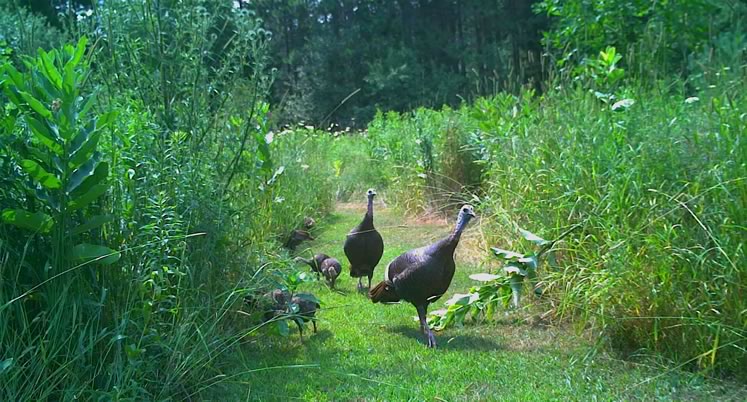
Wild turkeys
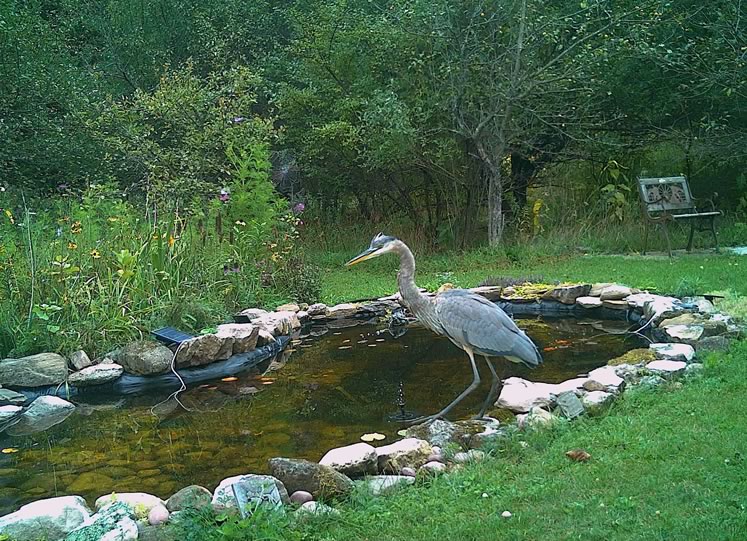
Great blue heron

White-tailed deer
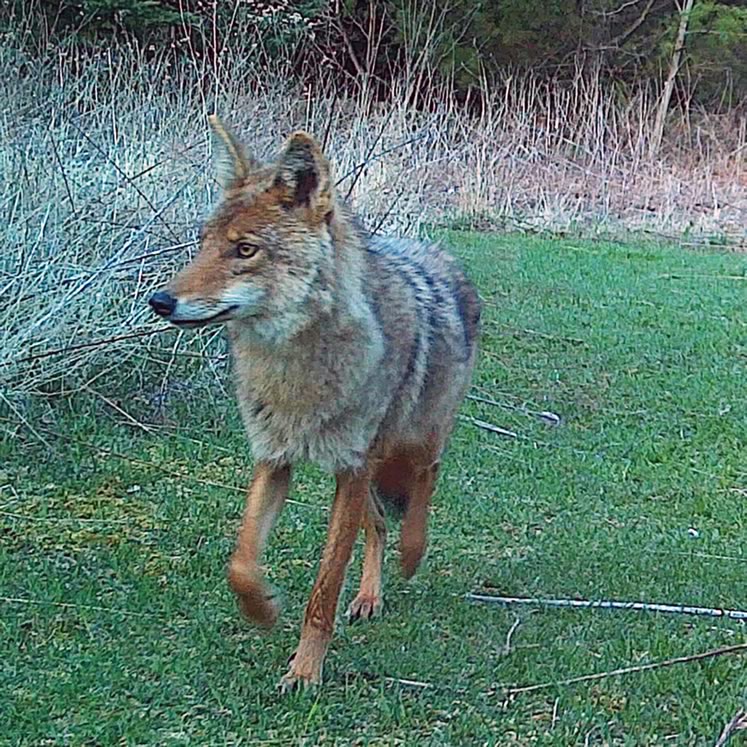
Coyote
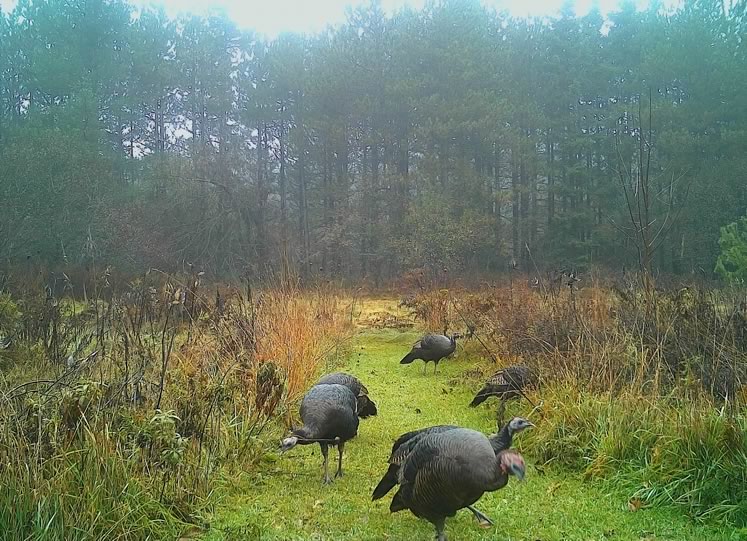
Wild turkeys
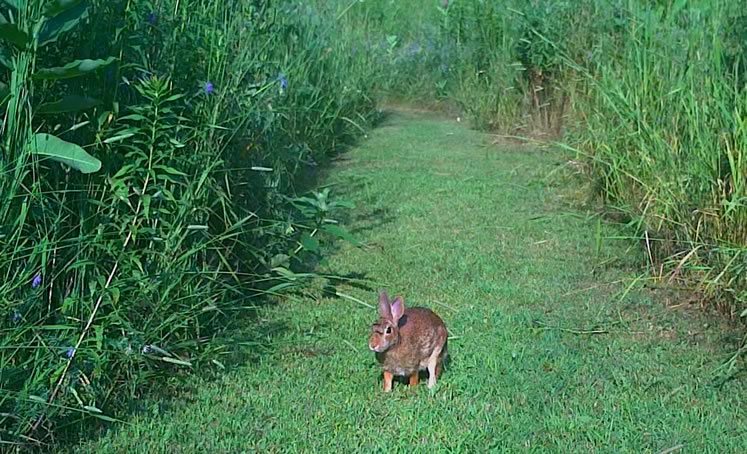
Cottontail rabbit
That is, until recently. Kathryn had created a pond on the edge of a meadow. It is a gorgeous thing, rimmed with ranks of wildflowers, rocks and spreading ground cover, and filled with lily pads, water hyacinths, and soon, approving frogs.
She relocated the trail cams to grab glimpses of the creatures who came to drink. We saw stills and videos of deer, porcupines, thirsty skunks, furtive coyotes, raccoon families washing their food (and, one night, mom aggressively driving away a prowling cat), even a languid marten, we think, who went for a moonlight dip. Our pond cam images of an unaware menagerie became a regular delight.
Until the great blue heron – which reminded us the cams can pick up not only nature at its sweetest, but also nature remorseless in tooth and claw – and beak. The heron flew into the shot spectacularly. Furling a big wingspan, it strode purposely around the pond before stepping in. There it stood, patient and motionless on long legs. Waiting.
Then, quick as you can say “lunch,” the big bird stabbed its stiletto beak into the water and came up with an unlucky frog, legs still kicking.
The heron lingered, casually wandering the pond, repeating its predations again and again. We counted six frogs eaten in the one sitting – well, standing. Our frog pond became the heron’s buffet. And not just once. It returned the next day. I was displeased. Highly displeased! Kathryn immediately posted “Pond Enemy No. 1” warnings on her Instagram account.
If I can I find a trail cam with a remote-controlled death laser, it’s going on my Christmas wish list. I know the heron has to eat, but these were our frogs.
Although train cams are constantly improving, there are still frustrations. The motion sensitivity is often too acute. For every meandering deer, ambling skunk or skulking raccoon, we seem to get tenfold of waving grasses and fluttering leaves.
Nominally waterproof, the cameras – some, and some just sometimes – can cease to function when wet, or work erratically. The odd time, the colours have been scrambled and we’ve watched pastel creatures prowling a purple forest under orange skies. At night the camera’s flash can startle and drive off midnight prowlers, or keep them at a distance, recording only glowering eyes glowing in the darkness. A pair of owls, perching by our pond in the wee hours, had huge reflective headlights for eyes.
One time we were treated to a coyote in close-up, his snout curiously sniffing at the camera. Courting grouse, mincing skunks, oblivious deer, inquisitive ravens, armadas of turkeys, wide-eyed squirrel pups, porcupines, rabbits, pheasants, owls, raccoons and one gluttonous heron – these are the candid cavalcade of creatures that have delighted us via our trail cams – we now have three, so far.
Related Stories
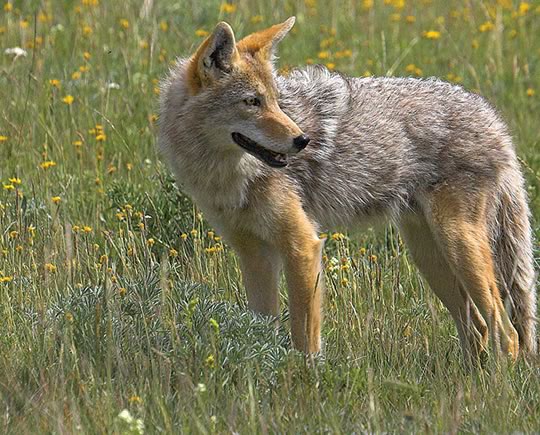
Dances with Coyotes
Mar 31, 2013 | | EnvironmentHumans have long had a love-hate relationship with these ingenious creatures.
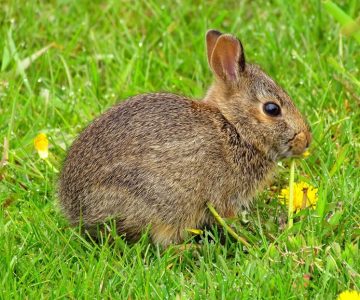
Eastern Cottontail Rabbits
Mar 30, 2018 | | Notes from the WildCottontails conceal themselves in dense thickets of shrubs and brambles.
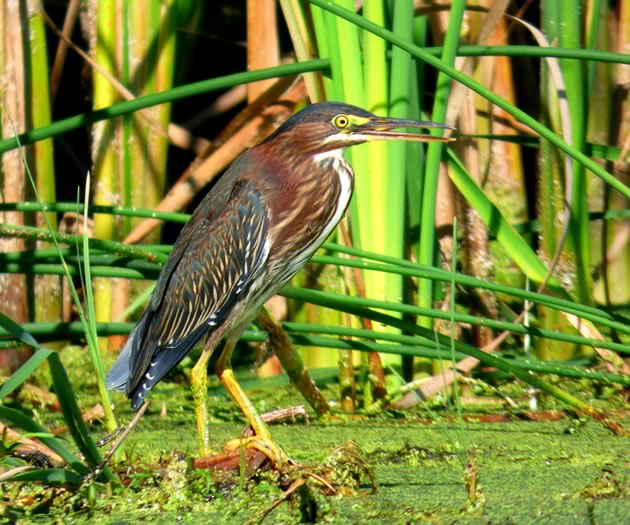
Herons and Egrets
Sep 27, 2016 | | Notes from the WildHerons, egrets and bitterns are long-legged freshwater and coastal birds in the family Ardeidae.
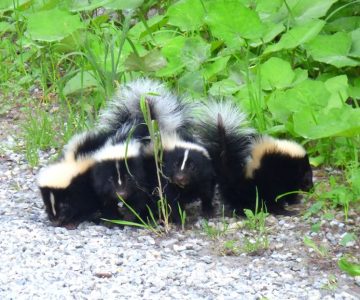
Skunks and Porcupines, Masters of Defence
Jan 12, 2018 | | Notes from the WildSkunks, in contrast to porcupines, are positively cuddly with soft, luxuriant fur, just begging to be stroked.

Animal Tracks
Feb 6, 2020 | | Notes from the WildTracks inscribed on snow by unseen animals offer tantalizing multilayered puzzles.










